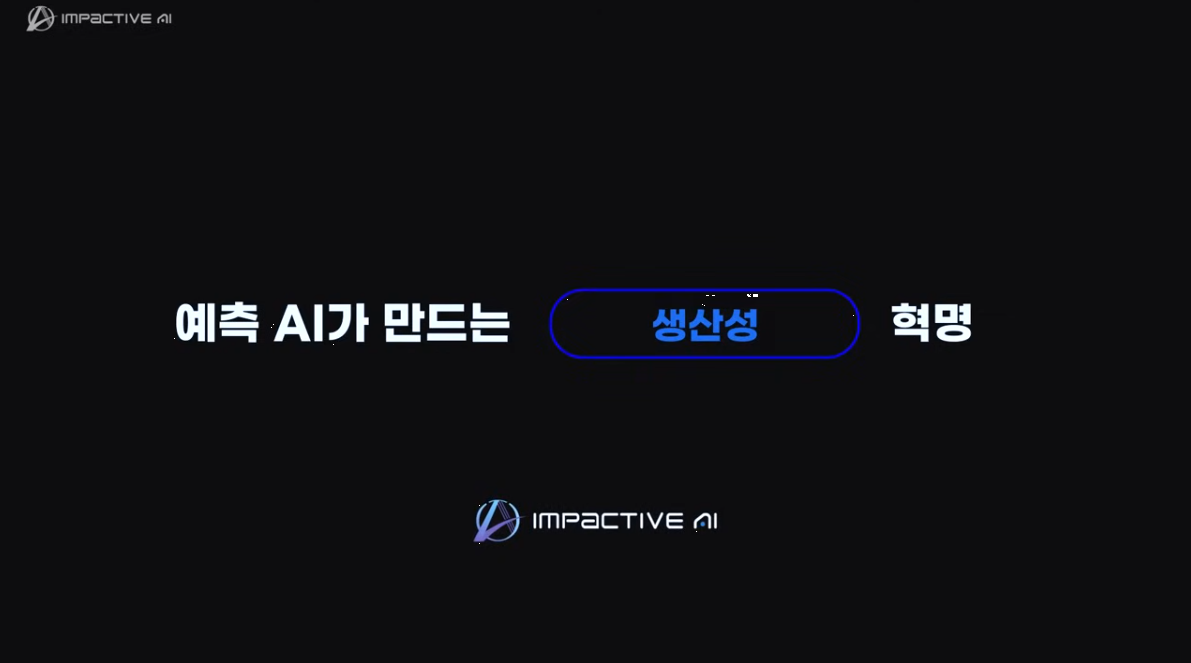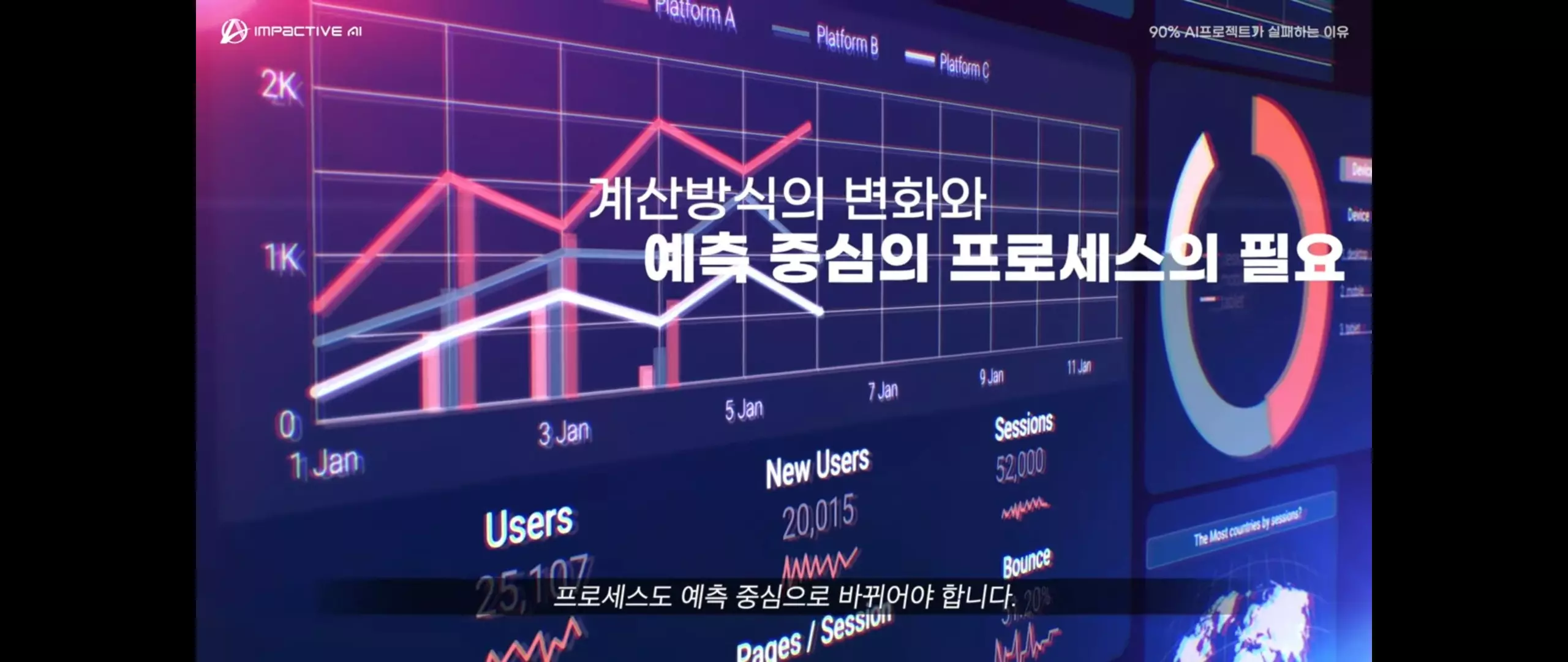Why the introduction of demand forecasting AI fails

Recently, the adoption of demand forecasting AI has been expanding across the manufacturing industry. In particular, the importance of accurate demand forecasting is becoming more prominent in the pharmaceutical, consumer goods, and chemical industries as market volatility increases.
However, the reality is that many companies are failing to achieve the expected results despite investing large amounts of money.
The reality of AI adoption is more grim than expected. According to a recent survey by the Korea Federation of Small and Medium Business, the adoption rate of AI among small and medium-sized companies in Korea is only 5.3%. What is even more concerning is that only 16.3% of companies are willing to adopt AI in the future.
The key reason for this low adoption rate is reportedly due to a lack of understanding of AI and a lack of awareness of its necessity. In fact, 80.7% of the companies surveyed answered that they “don't need AI,” and 14.9% answered that “they don't know how AI can help their management.”
This clearly shows that the practical value of AI technology and how it can be used are not being properly communicated to the industrial field.
Cost is also a significant barrier. 4.4% of companies cited the cost of implementation and maintenance as the main obstacle, indicating that the burden of initial investment and ongoing operating costs for AI adoption remains high.
In fact, the transition from traditional demand forecasting methods to AI-based forecasting models involves more than just a simple system replacement. This is because it requires a fundamental change in the overall operating methods and decision-making processes of the organization.
Technical limitations and challenges of introducing demand forecasting AI

The biggest technical challenge companies face in the process of introducing demand forecasting AI is ensuring the quality and consistency of data. In particular, in the manufacturing industry, where independent systems have been in operation for a long time, it is not easy to standardize and integrate data.
The 'black box' nature of AI models is also pointed out as an important limitation. Experts in the field must be able to understand and verify the basis of the prediction results presented by AI, but securing this kind of explanation is not easy due to the nature of complex algorithms.
Moreover, this problem is more pronounced in fields that are affected by various external variables, such as the pharmaceutical and food industries. It remains an important task to effectively reflect numerous variables, such as weather, economic fluctuations, and consumer trends, in the model.
Below, we have analyzed the reasons why demand forecasting AI fails to be introduced in each industry.
Manufacturing Industry
In the manufacturing industry, complex data is generated at various stages, including design, production, and distribution, so AI solutions are often applied only partially. It is difficult to fully utilize the potential of AI without comprehensive data integration management.
Therefore, it is important to establish an environment in which AI solutions can be applied comprehensively by improving the data management system.
The lack of high-quality data required for AI model training can lead to a decline in AI performance, which can result in the failure of AI implementation. Therefore, it is necessary to strengthen the data collection and management system and develop a systematic data acquisition strategy.
AI's incorrect judgment can cause serious damage in the production process. If AI determines that a defective product is normal in quality control, it can lead to customer complaints and a decline in corporate credibility.
It is necessary to establish a continuous monitoring and verification process and a system that complements the limitations of AI.
In addition, the problem of interlocking between the AI model and the existing system can reduce the effectiveness of AI adoption. For example, the lack of integration between the AI solution and the ERP system hinders data flow, making it difficult to provide real-time information. From the initial stage, it is necessary to design with compatibility with existing systems in mind.
The possibility of manufacturing know-how being leaked during the process of sharing data for training AI models cannot be ignored. Sharing sensitive manufacturing information when cooperating with external data providers can lead to a weakening of corporate competitiveness.
In other words, it is important to develop measures to strengthen data security and privacy and to work with trusted partners.
Retail
If the predictive model does not properly reflect business behavior, especially changes in consumer behavior due to a specific season or promotion, the accuracy of the prediction can drop significantly.
Retailers often rely on internal data to forecast demand, which may not accurately reflect market changes or consumer behavior. Companies should integrate external data to ensure data diversity and quality, thereby increasing forecast accuracy.
Inaccurate demand forecasts lead to unnecessary inventory, which adversely affects a company's cash flow. Excess inventory increases storage costs and losses, while insufficient inventory leads to lost sales opportunities.
In other words, accurate demand forecasting is important for efficient inventory management.
If the changes in consumer behavior during a promotion are not reflected in the prediction model, the probability of failure increases. If the surge in demand for a specific product due to a promotion is not predicted, inventory management may be disrupted.
Financial industry
Since financial institutions handle sensitive customer information, data security of AI systems is very important.
As the process of generating AI learns customer data, it is necessary to conduct thorough security checks and prepare data management plans before introducing the technology, keeping in mind the possibility of security problems arising from information leakage or incorrect data processing.
Biased data learning or incorrect information generation can lead to financial exclusion or damage to social trust. Inaccurate predictions for specific customer groups pose a risk of financial exclusion. It is important to set and comply with ethical standards for AI systems.
When introducing AI in the financial industry, legal regulations and compliance with financial regulations are essential. AI can limit the role of AI, but it plays an important role in protecting customer rights and safety. AI errors can lead to significant losses, especially when they are related to financial transactions.
Continuous monitoring and verification should be used to increase the reliability of AI systems to build trust among both customers and financial institutions.
AI is not a universal tool that can solve all problems, and human judgment is still important in situations where complex financial transactions or customer emotions must be considered. AI should be introduced in a way that complements human roles rather than replacing them, and a collaborative model between AI and humans should be established.
Key strategies for the successful implementation of demand forecasting AI

For the successful introduction of demand forecasting AI, a clear strategy and systematic approach are essential. Many companies often fail to achieve enterprise-wide change from the start.
Instead, it is preferable to conduct a pilot project for a specific product line or region, verify the results, and gradually expand the project. This approach reduces the risk of initial investment and takes into account the learning curve of the organization.
Building a close cooperative relationship with the department in charge of the field is also very important. No matter how good an AI system is, it cannot replace the practical experience and know-how of the field. Successful adoption cases have one thing in common: they actively collect the opinions of experts in the field and reflect them in the model.
Continuous monitoring and improvement of the performance of the model is also essential. AI models are not built once and for all, but must continue to evolve in line with changes in the market environment. To do this, it is necessary to consider the formation of a dedicated organization and a cooperation system with external experts.
Successful introduction of demand forecasting AI, step-by-step investment and risk management are important
Consider long-term cost efficiency
Investments in demand forecasting AI should not be based solely on the cost of system construction. The overall cost structure, including hardware, software, and human resources, should be systematically analyzed and prepared.
In particular, for the pharmaceutical/bio and chemical industries, which require large-scale facility investments, the accuracy of demand forecasting is directly linked to investment efficiency. In these industries, the initial introduction cost is high, but the investment value should be evaluated from a long-term perspective.

For mid-sized companies, cloud-based solutions can be considered to reduce initial costs. Using cloud services such as AWS or Azure can significantly reduce initial hardware investment costs.
In addition, it is important to secure AI experts. Collaboration between data scientists and domain experts is essential, and it may be more effective to gradually build internal capabilities through collaboration with external experts rather than hiring all of them internally.
Determining the Real Business Value
Successful implementation of demand forecasting AI goes beyond simply improving forecast accuracy and greatly improves operational efficiency across the enterprise. In fact, successful cases show that the forecast error rate is reduced by 20-50% and inventory management costs are reduced by 15-30%.
For example, in industries where shelf life is important, such as food and agricultural and marine products, it can create even greater value. Accurate demand forecasting through AI significantly reduces product waste and helps optimize freshness management.
In other words, improving operational efficiency through production plan optimization is also a notable achievement. The specific effects include 50% automation of human resource management tasks, reduced decision-making time, and 10-15% reduction in work force management costs.
In addition, improving real-time market responsiveness is also an important value. In the consumer goods industry in particular, responding quickly to changes in consumer trends is the key to competitiveness, and real-time demand forecasting through AI greatly improves this responsiveness.
Strategic approach to building a successful partnership
In order to successfully implement demand forecasting AI, it is very important to select the right partner. It is necessary to comprehensively evaluate not only the technical capabilities of the partner but also their understanding of the industry and experience with similar projects.
In particular, in fields that require expertise, such as the pharmaceutical/bio and chemical industries, it is important to select a partner with a deep understanding of the industry characteristics. This is because successful implementation is difficult with just AI technology.
Data security and compliance capabilities are also important evaluation criteria. In particular, for some industries that are subject to strict regulatory environments, the ability to process data securely is essential.
The type of partnership must also be carefully decided. Among the various collaboration methods, such as joint development, consulting and technology transfer, and outsourcing, the most suitable model for the company's situation and goals must be selected.
Demand Forecasting AI's Future and Corporate Response Strategies
As digital transformation accelerates, demand forecasting AI is becoming a necessity rather than an option. In particular, in the context of growing uncertainty in the global supply chain, accurate demand forecasting has become a core competency directly linked to the survival of companies.
Demand forecasting AI of the future is expected to become more sophisticated. The development of deep learning and reinforcement learning will increase the predictive accuracy, and the development of explainable AI (XAI) technology will improve the transparency of the decision-making process.
In particular, in the manufacturing industry, the combination of IoT sensors and AI will enable real-time data collection and analysis, making more dynamic demand forecasting possible. This will be an opportunity to greatly improve the responsiveness of the production site.
However, to benefit from these technological advancements, systematic preparation is required. Basic capabilities such as data quality management, human resource development, and organizational culture improvement must be strengthened step by step.
Key action plans that executives should pay attention to
- A clear digital transformation roadmap must be established. The purpose of the roadmap should not be simply to introduce AI, but rather a concrete plan that is linked to the company's strategic goals.
- It is urgent to establish a data governance system. The performance of demand forecasting AI is ultimately dependent on the quality of data. A systematic system must be established to manage the entire process from data collection to utilization.
- Investment in change management is required. The introduction of AI is ultimately a human endeavor. Organizational support, such as operating training programs to strengthen employees' digital capabilities and improving performance evaluation systems, must be provided.
- Investment with a long-term perspective is required. The effects of AI adoption are unlikely to be seen in the short term. Instead of being swayed by initial results, stable support is needed for continuous improvement and development.
Demand Forecasting AI, Beyond Failure to Success
Demand Forecasting AI has now become a core competitive advantage for companies. Many companies are experiencing failures, but these failures are becoming valuable lessons for success.
Successful AI adoption requires balanced development of three elements: technology, process, and people. Success cannot be achieved by emphasizing or neglecting any one element.
In particular, the firm commitment and support of management is important. This is because the adoption of AI is a process that entails fundamental changes in the organization, not just a simple system replacement. In this process of change, the role of leadership is becoming more important than ever.
Ultimately, the successful introduction of demand forecasting AI is not a matter of technology, but of strategy. When a clear vision, strategy, and systematic implementation plan are in place, and the organization has the capabilities to support them, true digital transformation will be achieved.


.svg)
%202.svg)
.svg)


.svg)
















.svg)